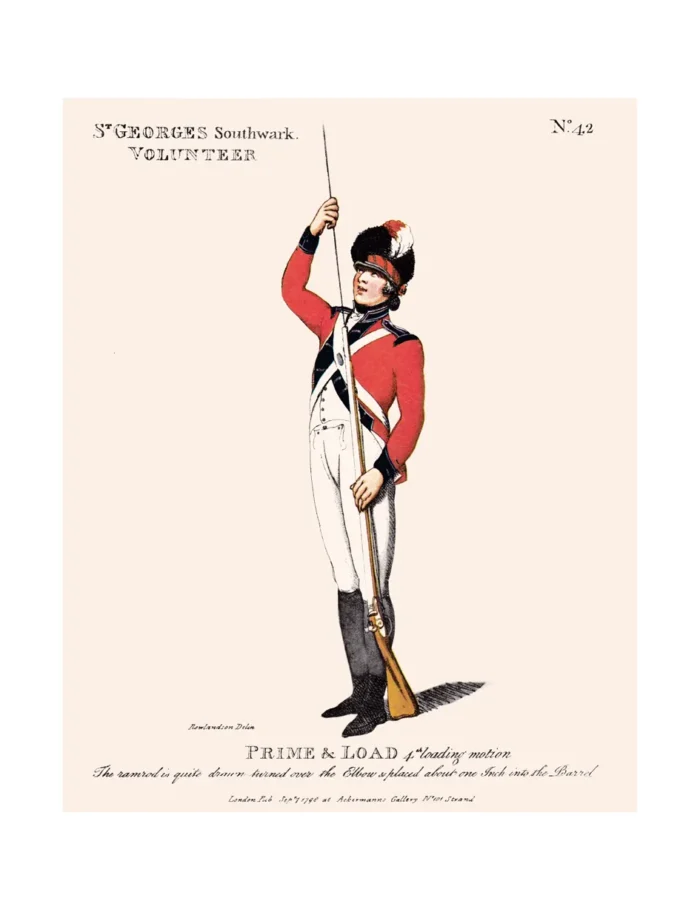No. 42 St. George’s, Southwark Volunteer
£12.50
St. George’s Parish, Southwark (scroll down for a more detailed Description)
The first reprints of the 1798 aquatints by Thomas Rowlandson (published by Rudolph Ackermann) published in 1972 by Hugh Evelyn Limited.
Image size is 20.5 x 25.5 cm [8” x 10”] against a light greyish orange background (c. RGB fcf2e1) impressed on medium high white matt cartridge paper of c. 120 g/m2.
Print size: c. 26.2 x 33.7 cm [17” x 12 ¾”] may vary slightly from printers’ cut 50 years ago
Details of London Wards and Parishes provided by © the British Library
We offer thanks to the Trustees of the British Library and British Museum and Wikipedia for some text (and map outlines
Print is STANDARD size – shipping is the same for 1 to 10 prints (based on largest print size in your order) – see Shipping & Returns
Who were the Loyal Volunteers ? See here
In stock
Description

St George the Martyr is a church in the historic Borough district of south London. It lies within the modern-day London Borough of Southwark, (see map) on Borough High Street at the junction with Long Lane, Marshalsea Road, and Tabard Street. St George the Martyr is named after Saint George. The church is a Grade II* listed building. The church has strong associations with Charles Dickens, whose father was imprisoned for debt in the Marshalsea prison. The surviving wall of the prison adjoins the north side of the churchyard. Dickens himself lived nearby, in Lant Street, lodging in a house that belonged to the Vestry Clerk of St George’s. This was during the darkest period of his life when, as a teenager, with his father in prison, he had to work in the ‘blacking factory’, and his literary career must have seemed an impossible dream. Later, he was to set several scenes of the novel Little Dorrit in and around St George’s Church. There is a small representation of Little Dorrit in the east window of the church. It is also a recognised church of the City of London Company of Parish Clerks and the guild church of the Guildable Manor. From 2008 the annual Southwark Quit Rents ceremony, before the Queen’s Remembrancer has taken place there.
Additional information
| Weight | 0.0121 kg |
|---|---|
| Dimensions | 25 × 35 cm |





